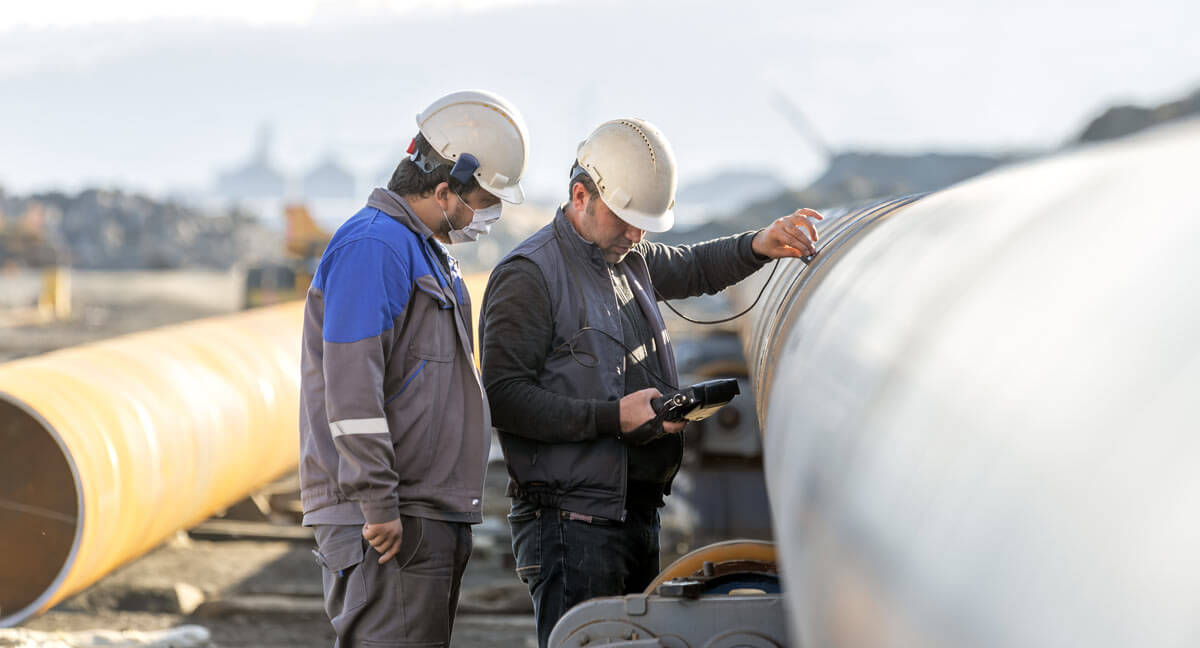Introducing the Diverse Series Of Welding Solutions and Their Benefits
As sectors remain to develop and require accuracy in their production processes, the relevance of welding solutions has actually come to be increasingly pronounced. From the adaptability of arc welding to the effectiveness of MIG welding, and the elaborate work achieved with TIG welding to the precision of laser welding, the variety of welding strategies available is large. Each technique brings its very own collection of advantages and applications, accommodating a variety of requirements throughout numerous sectors. Comprehending these varied welding services and their advantages can provide valuable understandings right into optimizing fabrication procedures and attaining superior results.
Kinds Of Welding Services
One typical type is MIG welding, likewise recognized as Gas Steel Arc Welding (GMAW), which utilizes a cable electrode to sign up with metals with each other. Another extensively made use of approach is TIG welding, or Gas Tungsten Arc Welding (GTAW), which uses a non-consumable tungsten electrode to create a clean and exact weld.
Furthermore, there is Stick welding, or Protected Metal Arc Welding (SMAW), which is understood for its simplicity and effectiveness, particularly in outside or windy conditions. This technique is generally made use of in construction and pipe welding. There is Flux-Cored Arc Welding (FCAW), which is a flexible procedure appropriate for thick materials and can be used in both automatic and semi-automatic applications. Each kind of welding solution has its staminas and is chosen based upon variables such as product type, thickness, and the details demands of the project at hand.
Advantages of Arc Welding
Arc welding offers a wide variety of benefits that cater to different commercial demands and requirements. Furthermore, arc welding is recognized for its high welding rates, which can considerably increase efficiency in making procedures.
An additional key advantage of arc welding is its capacity to develop solid and durable welds. Arc welding likewise produces accurate and clean welds, reducing the demand for extra finishing job.
Benefits of MIG Welding
With a focus on performance and durability in welding procedures, MIG welding provides a distinct collection of advantages that enhance the flexibility and toughness discovered in arc welding. MIG welding, or Gas Steel Arc Welding (GMAW), is known for its rate and ease of use.
In addition, MIG welding creates clean welds with very little splatter, decreasing the need for considerable clean-up after the welding process. The versatility of MIG welding permits welding a vast array of products, consisting of light weight aluminum, stainless-steel, and mild steel. This versatility makes MIG welding suitable for various sectors, from vehicle to building and construction.
Furthermore, MIG welding is recognized for its high deposition rates, indicating more material can be deposited in a much shorter quantity of time contrasted to other welding processes. This leads to enhanced performance and cost-effectiveness for tasks that need large volumes of welds. On the whole, the advantages of MIG welding make it a useful link method for attaining reliable and durable welds throughout various applications.

Checking Out TIG Welding Perks
TIG welding, also known as Gas Tungsten Arc Welding (GTAW), offers a distinct collection of advantages that cater to precision and control in welding applications. One of the primary benefits of TIG welding is its capacity to create top notch, tidy welds without the demand for filler material.
Additionally, TIG welding can be utilized on a variety of metals, including stainless steel, titanium, copper, and light weight aluminum, making it a flexible option for various welding tasks. The procedure additionally allows for welding in various positions, using adaptability in tough welding circumstances. Additionally, TIG welding generates welds with superior toughness and stability, making it a favored choice for vital applications where weld quality is extremely important. Overall, the precision, versatility, and control used by TIG welding make it a valuable method in the welding sector (Welding Inspection Service).
Benefits of Laser Welding

An additional benefit of laser welding is its convenience in working with a broad variety of materials, including steels, plastics, and also different materials. This flexibility makes laser welding suitable for varied sectors such as vehicle, aerospace, electronic devices, and medical devices. The non-contact nature of laser welding also decreases contamination, making it a ecologically pleasant and clean welding technique.
Additionally, laser welding enables complex and intricate weld geometries that might be challenging to accomplish with typical welding techniques. This ability opens up more info here brand-new layout opportunities and allows for the manufacturing of lighter and much more cutting-edge elements - Welding Inspection Service. In general, the advantages of laser welding make it a recommended option for numerous production applications seeking high precision and performance
Verdict

Arc welding gives solid and sturdy welds, while MIG welding offers performance and flexibility. TIG welding makes sure specific and tidy welds, and laser welding supplies high accuracy and speed.
From the adaptability of arc welding to the effectiveness of MIG welding, and the resource complex work achieved with TIG welding to the precision of laser welding, the range of welding methods available is vast. One common kind is MIG welding, additionally recognized as Gas Steel Arc Welding (GMAW), which uses a wire electrode to join steels with each other. In addition, arc welding is recognized for its high welding rates, which can considerably increase productivity in producing processes.With a focus on effectiveness and resilience in welding procedures, MIG welding offers an unique collection of benefits that match the versatility and stamina found in arc welding.TIG welding, also recognized as Gas Tungsten Arc Welding (GTAW), provides a distinct collection of benefits that provide to precision and control in welding applications.
 Daniel Stern Then & Now!
Daniel Stern Then & Now! Joshua Jackson Then & Now!
Joshua Jackson Then & Now! Shannon Elizabeth Then & Now!
Shannon Elizabeth Then & Now! Suri Cruise Then & Now!
Suri Cruise Then & Now! Bill Cosby Then & Now!
Bill Cosby Then & Now!